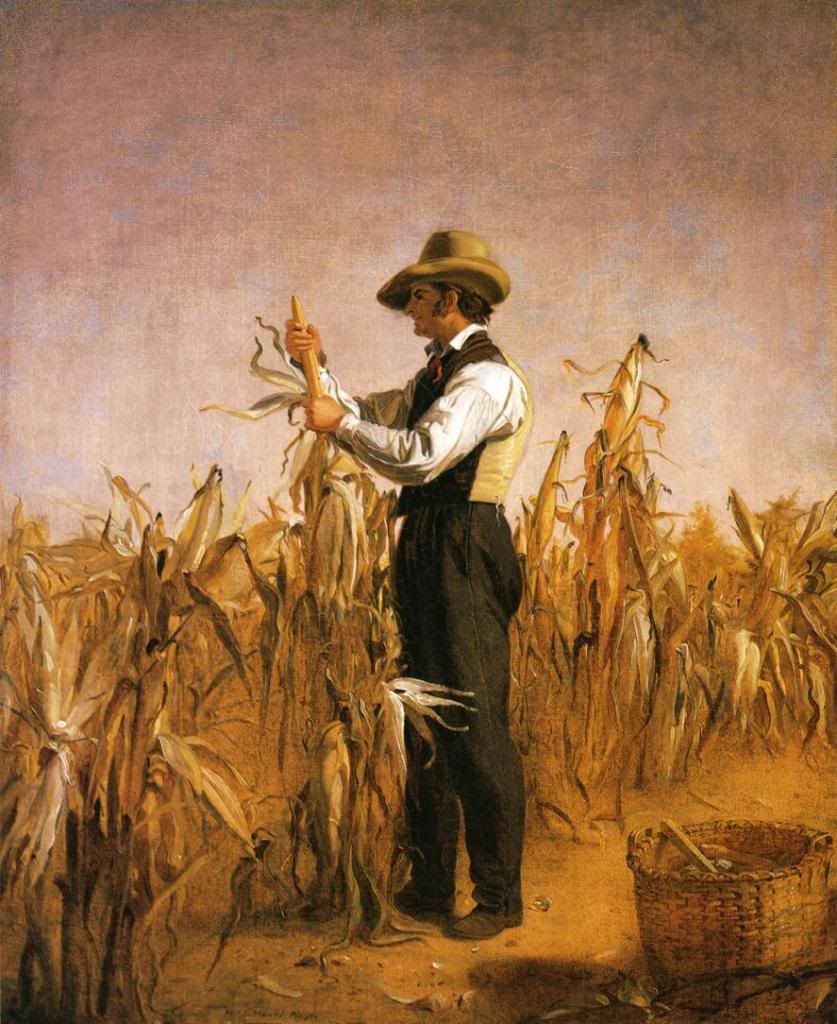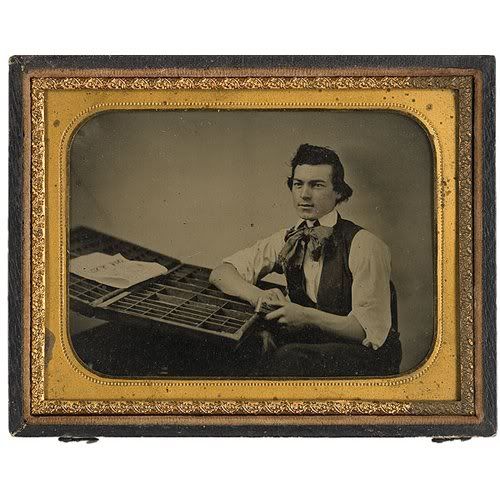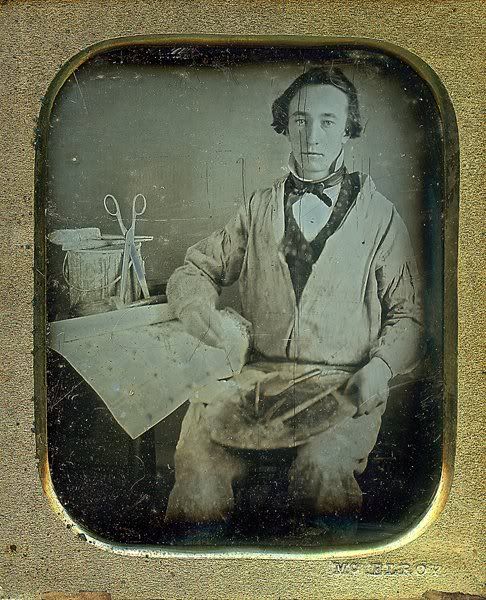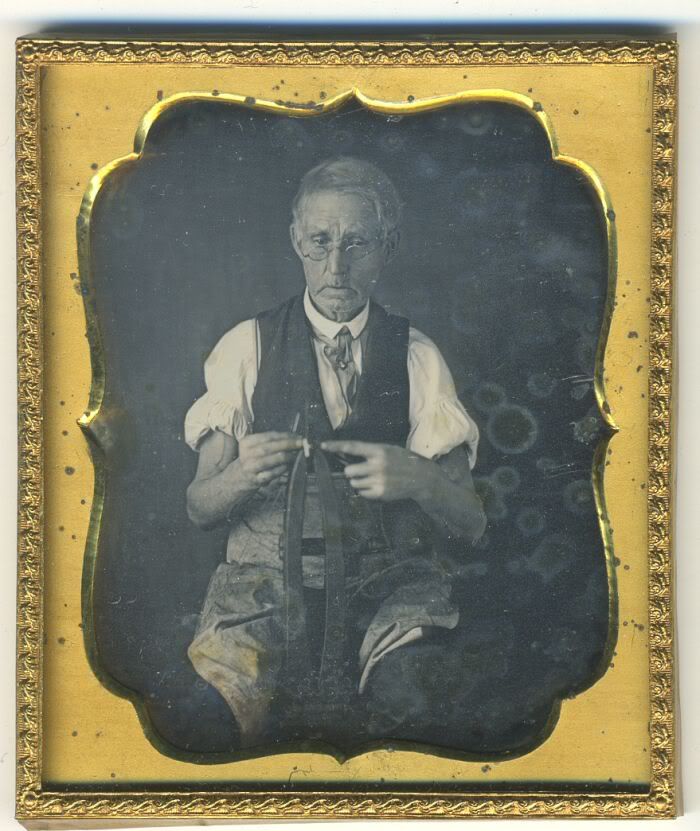This thread is an off-shoot of another thread specifically discussing cravats worn by Confederate soldiers and how common or uncommon that might have been. Of course, as usual, the thread went off on many different tangents about socio-economic backgrounds, the practicality of them being worn on the job by working class men and of course the usual drive by "dandy" comments were made. So I felt the need to relocate a portion of that conversation here so we can talk all day about cravats worn by working class civilian men.
What irritates me more then anything is the total lack of historical documentation anyone uses to back up their opinions. Many reenactors rely on their "common sense" when putting together their impressions. They ask themselves questions like, "Well if I lived back then I'd wear this kind of clothing," or "I'd wear my clothing in this sort of manner, because as a working man that makes sense to me," or "I don't give a crap about fashion, I just wear whatever!" The hypothesis thus being created they then generally come to a conclusion based on their life experiences as a modern person. Of course never in the course of all this thinking does the thought once cross the persons mind, "Well, I wonder how they actually dressed, and what they felt was a practical way of wearing their clothing?"
To answer this question a challenging prospect awaits them and many simply give up here. What is that "challenging prospect" you say? Well, its actually quite simple, BOOK LEARNING and mucho RESEARCH, preferably from as many sources as one can lay their hands! And you're not going to find this info on any forum where opinion reigns over facts.
I know this is meant sarcastically, but this kind of thinking is very prevalent. Again, where's the historical information to back this tongue-in-cheek opinion? Just because we all dress like slobs in today's society (heck you don't even have to wear a suit or tie to the office much anymore) doesn't mean the same applies for the mid-19th century working class. A recent survey found neck-wear (ties, bow-ties) among men at an all time low. But while that might be fine for today's man that just wasn't the case with our forefathers.
So did working class men commonly wear cravats on the job? Well let's look at some real documentation. Anyone who has any real information besides just opinion, please, feel free to share it. The following painting are by artist William Sydney Mount and and can be seen along with many other great works of art at http://the-athenaeum.org. None of these men are by any means "dandies" or "rich-folk". All of the following works date to before the Civil War, since that is my area of research, so Civil War folks need to take this with a grain of salt.
Ringing the Pig 1842

Farmers Nooning 1836 (Is that man actually wearing a top-hat on the job? Dear God!)

Long Island Farmer Husking Corn 1833-34

The Power of Music 1847

Caught Napping 1848

Catching Rabbits 1839

Catching Crabs date?

What irritates me more then anything is the total lack of historical documentation anyone uses to back up their opinions. Many reenactors rely on their "common sense" when putting together their impressions. They ask themselves questions like, "Well if I lived back then I'd wear this kind of clothing," or "I'd wear my clothing in this sort of manner, because as a working man that makes sense to me," or "I don't give a crap about fashion, I just wear whatever!" The hypothesis thus being created they then generally come to a conclusion based on their life experiences as a modern person. Of course never in the course of all this thinking does the thought once cross the persons mind, "Well, I wonder how they actually dressed, and what they felt was a practical way of wearing their clothing?"
To answer this question a challenging prospect awaits them and many simply give up here. What is that "challenging prospect" you say? Well, its actually quite simple, BOOK LEARNING and mucho RESEARCH, preferably from as many sources as one can lay their hands! And you're not going to find this info on any forum where opinion reigns over facts.
"Yes, the CW era farmers hereabouts always wore their cravats when milking the cows, slopping the hogs, and plowing the fields- just as modern farmers always wear their neck ties."
I know this is meant sarcastically, but this kind of thinking is very prevalent. Again, where's the historical information to back this tongue-in-cheek opinion? Just because we all dress like slobs in today's society (heck you don't even have to wear a suit or tie to the office much anymore) doesn't mean the same applies for the mid-19th century working class. A recent survey found neck-wear (ties, bow-ties) among men at an all time low. But while that might be fine for today's man that just wasn't the case with our forefathers.
So did working class men commonly wear cravats on the job? Well let's look at some real documentation. Anyone who has any real information besides just opinion, please, feel free to share it. The following painting are by artist William Sydney Mount and and can be seen along with many other great works of art at http://the-athenaeum.org. None of these men are by any means "dandies" or "rich-folk". All of the following works date to before the Civil War, since that is my area of research, so Civil War folks need to take this with a grain of salt.
Ringing the Pig 1842

Farmers Nooning 1836 (Is that man actually wearing a top-hat on the job? Dear God!)

Long Island Farmer Husking Corn 1833-34

The Power of Music 1847

Caught Napping 1848

Catching Rabbits 1839

Catching Crabs date?













 while taking a break at Washington-on-the-Brazos.
while taking a break at Washington-on-the-Brazos.













Comment